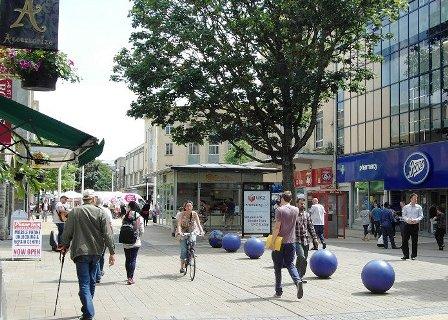 Bristol Council is consulting on a draft policy on ‘shared use’ routes for people walking and on bicycles. The Society welcomes the council’s initiative to create this draft policy. The document fulfils a need to make clear the Council’s policy for how the balance between provision for walking and cycling will be achieved. The Society supports Bristol Walking Alliance’s response.
Bristol Council is consulting on a draft policy on ‘shared use’ routes for people walking and on bicycles. The Society welcomes the council’s initiative to create this draft policy. The document fulfils a need to make clear the Council’s policy for how the balance between provision for walking and cycling will be achieved. The Society supports Bristol Walking Alliance’s response.
The comments include:
- Design guidance – detailed: the Council must decide which detailed design guidance it is going to use and say so in this document. This policy is not complete without that.
- Design guidance – key elements: the shared use policy should include some key elements of design guidance to give confidence that the adopted design guidance is appropriate for managing shared use well.
- Delivering the vision: the policy must give more clarity on the commitment to delivering segregated cycle routes. Delivering the ‘vision’ of good parallel networks depends on providing segregated routes alongside the carriageway. Otherwise, cycle routes will take away from pedestrian space.
- The importance of legibility: On all shared routes, the signage and layout should clarify for different users the terms of engagement, ie be ‘legible’. A one-way segregated cycle route at either side of the road is simplest, and therefore the most legible, especially if it is applied widely.
- The needs of all users: The policy needs to refer to the needs of all users, including people using wheelchairs or mobility scooters.
- The impact of cycle routes on the walking environment: Where unsegregated and delineated routes are proposed, the aim should be, at the very least, to do no harm to the walking environment and preferably to improve it.
- The good behaviour message: We suggest that the council should implement “Respect other users” (or similar) signage at key places. Pinch points are places where at times there is a high volume of pedestrian traffic that fills the space, and such signage could be used at all pinch points. It is important that this message is put across.
The full BWA response is here.
Prince Street cycle route
Bristol Council has consulted on a cycle route along Prince Street from the Centre through to Wapping Road. The Prince Street route design indicates current council thinking and sets precedents, so it is important to respond. The Society supports Bristol Walking Alliance’s response. The comments include:
- The Centre and Broad Quay – legibility: We support the greater clarity on the route to be taken by cyclists, but it is felt that what is proposed is not enough for good legibility without greater differentiation, eg by colour.
- Farrs Lane: Recognising the importance of the Brunel Mile as a walking and cycling route, we suggest that the crossing of Prince Street connecting Farrs Lane to Queen Square should have user priority over the Prince Street cycle route.
- Prince Street: impact on walking experience: The two-way cycle lane goes down the middle of the pavement, and in some places leaves inadequate width for walkers. A better walking experience would be provided if the cycle route was next to the road.
- Prince Street bridge: BWA’s view is that the current (pre-works) provision for pedestrians on the bridge is inadequate. Given the high volume of pedestrians, a lane should not be shared between walkers and cyclists. The whole of one side of the bridge should be only for pedestrians, wheelchairs, mobility vehicles, and people pushing bikes.
- The good behaviour message: In our comments on the council’s draft shared use policy, we suggest that the council should implement “Respect other users” (or similar) signage at key places. The Centre and Prince Street bridge are two such places.
The consultation is here. The full BWA response is here.
Alan Morris
Chair, Bristol Walking Alliance
